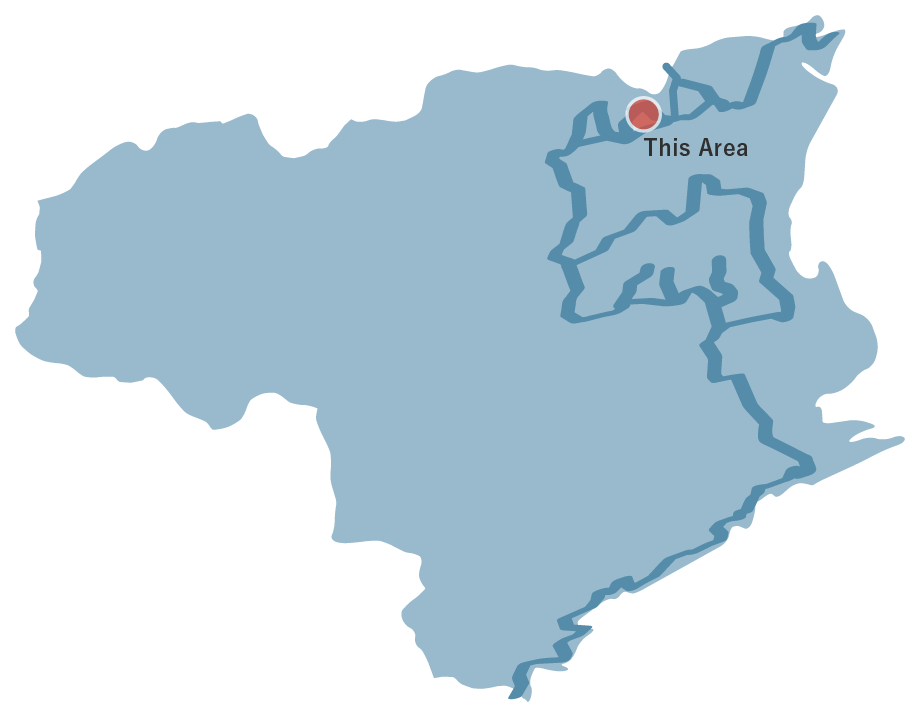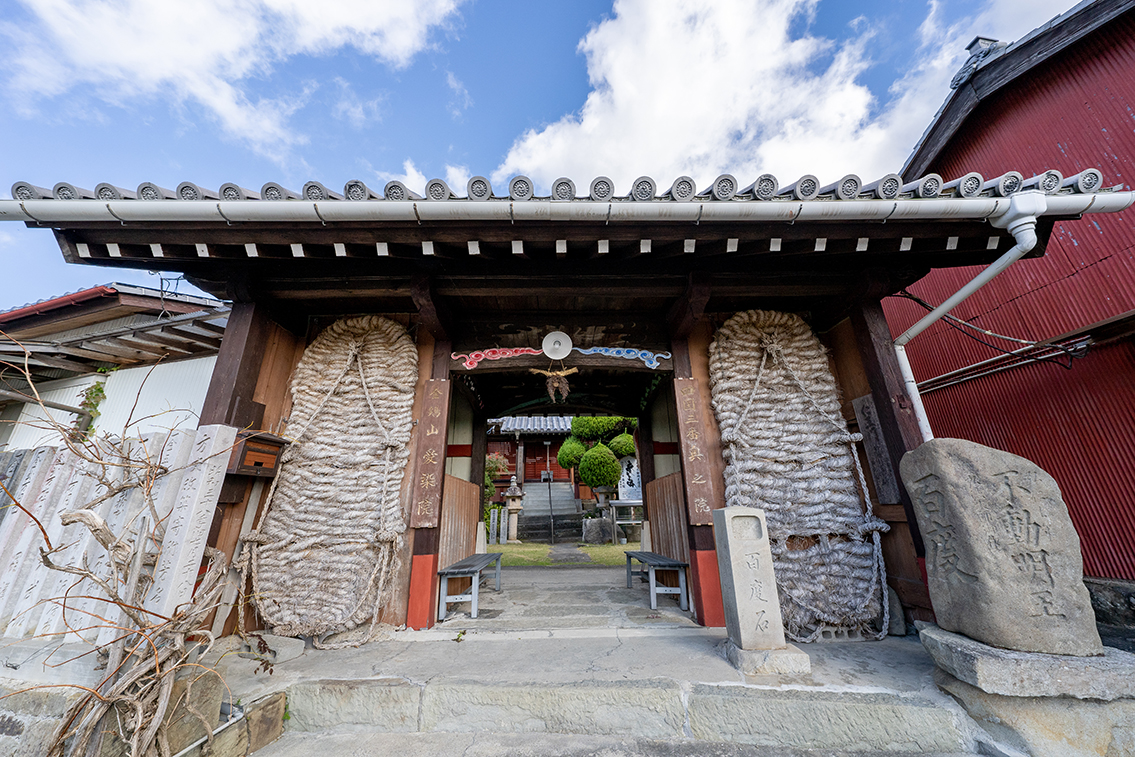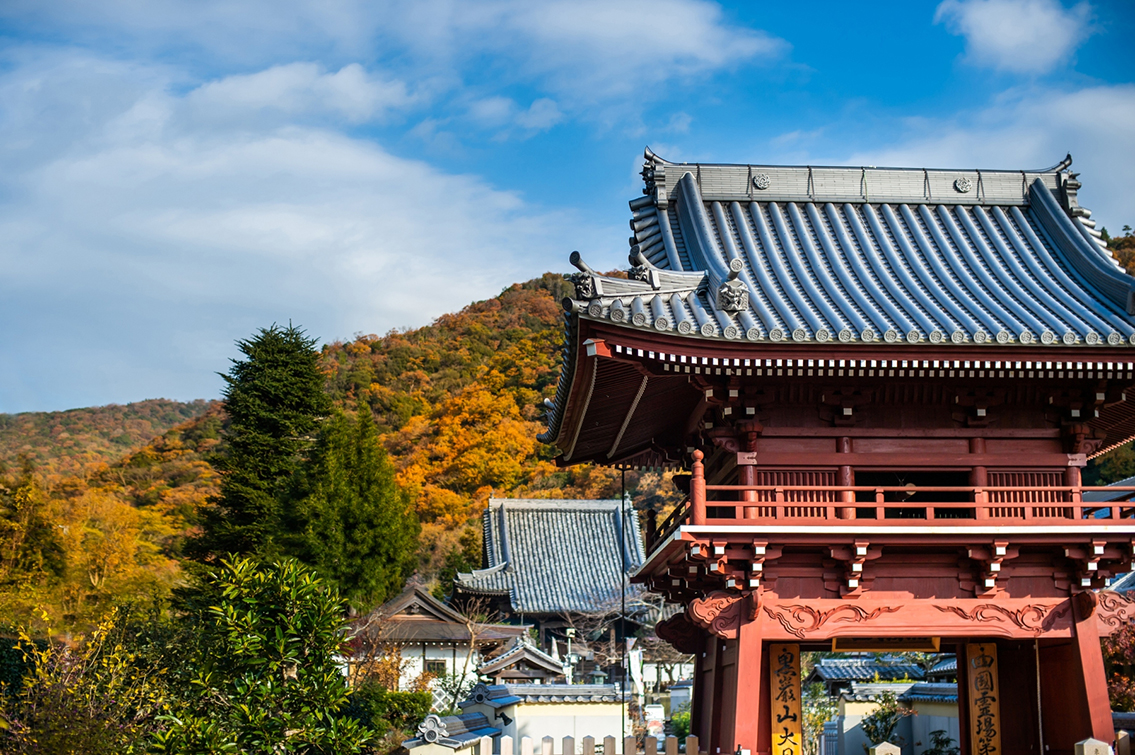Yamadera no Michi

Yamadera no Michi
Walk past the front of the "Aizen-in Temple," also known as "Nato Fudo-san," and down the pilgrimage route surrounded by dense sawtooth oak and evergreen oak trees. You will come across a village in the small basin between the mountains. After walking along the farm road through peach and grape orchards, you will arrive at Aizome-an. You will find a wooden statue of Inubuse Kyusuke, who contributed greatly to the development of Awa Indigo, placed here. Climb up to the first to third observation points and the former site of the Oyama Youth Outdoor Activity Center. Continue down the road through the red pine forest, exit in Miyagaya, and head to Daiyama Park. Walk down a carpet of red pine needles to the Izumiya River and emerge into the countryside. You can go over the detailed history of sugar production at the Awa Wasanbon Sugar Museum, located in a corner of a residential area.
Yamadera no Michi(16.7km)

 Spots to photograph
Spots to photograph
If you wish to receive a certificate, please take a photo that includes yourself at the designated photo point for each course.
Nearby sightseeing spots

-
1
 Aizen-in Temple
Aizen-in TempleThis is the inner sanctuary of Konsen-ji, the third temple on the Shikoku 88 Temple Pilgrimage. Historically known as Kongo-san Amida-ji Temple, the temple's principal image is a seated statue of Fudo Myo-o, said to have been crafted by Kobo Daishi. So it is also affectionately known as "Nato no O-Fudo-san." You must see the Large Straw Sandals near the Niomon Gate. Why not offer up a prayer for the well-being of your body and safe travels?
-
2
 Dainichi-ji Temple
Dainichi-ji TempleThe temple's vermilion main gate stands out against the greenery of the mountains. This is the fourth temple of the Shikoku 88 Temple Pilgrimage and is said to have been founded by Kobo Daishi. The principal deity, Dainichi Nyorai is a Hibutsu statue that is generally withheld from public viewing, measuring approximately 5.5 cm, and is said to have been made by Daishi. Dainichi Nyorai was regarded as the guardian deity of the Hachisuka clan. The Sanmon's structure incorporates a bell tower and a Niomon gate. The temple has a main hall, Daishi-do Hall, and Yakushi-do Hall.
-
3
 Gohyaku Rakan and Jizo-ji Temple
Gohyaku Rakan and Jizo-ji TempleThe Rakan Hall is located on the mountain behind the Jizo-ji Temple, the fifth temple of the 88 Temples in the Shikoku Pilgrimage. The Jizo-ji Temple was founded by Kobo Daishi by the imperial order of Emperor Saga in 821. It is said that the 5.6 cm statue of the principal deity of the temple, the Shogun Jizo Bosatsu, was carved at that time. As you enter the Rakan Hall, you will see more than 300 life-sized statues of rakans, or arhats, semi-enlightened followers of Buddha, lined together, giving the place a unique ambiance.
-
4
 Waza no Yakata
Waza no YakataWhile enjoying the grace of lush nature, you can see and experience the traditional crafts of Kamiita town, such as dyeing indigo and making Awa Wasanbon sugar, and experience the magnificent yet delicate "techniques" involved in making them, and learn about "food and health" using local products at this experiential tourist facility.



